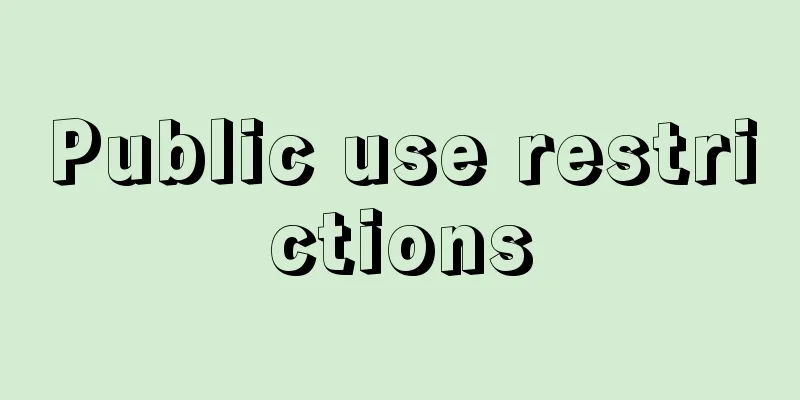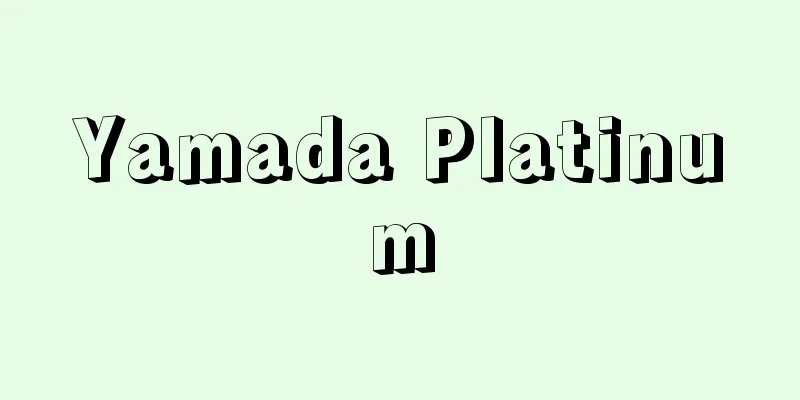Public use restrictions

|
Restricting specific property rights of a private individual in order to meet the needs of a specific business that is of public interest. It is distinguished from public expropriation, public land exchange, and right conversion in that it is a mere restriction on property rights. In principle, this is done with fair compensation, but there are cases where certain burden restrictions are not required. (1) Restriction on public property Designating specific property owned by a private individual as public property and restricting the rights of the owner to the extent necessary to use the public property for the said administrative purpose. Examples of this include restrictions on ownership rights such as restrictions on changing the current state of important cultural properties, export prohibitions, and obligations to exhibit for public viewing (Cultural Properties Protection Law, Articles 43, 44, and 48), and restrictions on acts of changing the nature of land within protected forest areas (Forestry Law, Article 34). (2) Public use Compulsory use of specific property of a private individual. There are continuous use and temporary use. (3) Burden restriction When the value of the use of a specific property of another person is not actively necessary for a specific public welfare business, the imposition of a forceful restriction on the property rights of that person in order to prevent damage to the public welfare business. This includes restrictions, prohibitions, or obligations to take certain actions in specific areas (river conservation areas, erosion control areas, urban planning areas, etc.). (→ Public Expenses) Source: Encyclopaedia Britannica Concise Encyclopedia About Encyclopaedia Britannica Concise Encyclopedia Information |
|
公共の利益となる特定の事業の需要を満たすために,私人の特定の財産権を制限すること。財産権に対する単なる制限である点で,公用収用,公用換地,権利変換と区別される。正当な補償のもとに行われることを原則とするが,一定の負担制限については,必要とされない場合がある。 (1) 公物制限 私人の所有に属する特定の財産を公物に指定し,その公物を当該行政目的に供するに必要な限度内において,その所有者の権利を制限すること。重要文化財の現状変更の制限,輸出禁止,公開のための出品義務などの所有権制限 (文化財保護法 43,44,48) ,保安林の区域内における土地の形質の変更行為の制限 (森林法 34) などがこれである。 (2) 公用使用 私人の特定の財産を強制的に使用すること。継続的使用と一時的使用がある。 (3) 負担制限 他人の特定の財産の使用価値が積極的に特定の公益事業に必要ではない場合,当該公益事業に対する損害予防のため,その財産権に対し権力的な制限を加えること。特定の区域 (河川保全区域,砂防区域,都市計画区域など) における一定の行為の制限,禁止または一定の作為義務などがこれである。 (→公用負担 )
出典 ブリタニカ国際大百科事典 小項目事典ブリタニカ国際大百科事典 小項目事典について 情報 |
<<: Red-billed quelea (red-leaf bird)
Recommend
Sprinkler - sprinkler (English spelling)
Originally, it refers to scattering or sprinkling...
Lagoon - Sekiko
A shallow lake separated from the open sea by a s...
Pincus, G. (English spelling) PincusG
... It has been known since the 1930s that the us...
Lecho (English spelling)
A Vietnamese dynasty. There are two dynasties call...
Otaniyama Tomb No. 22 - Otaniyama 22nd Tomb
...What made Iwahashi Senzuka famous was the uniq...
Sugar Revolution
...In all of these colonies, sugarcane was cultiv...
Alba Iulia
Located in central-western Romania, it is the capi...
Terminally ill adopted child - Matsugo Yohshi
Under Edo Shogunate law, adoption was a sudden ap...
Drying - Kansou (English spelling)
This is an operation to remove water from a solid...
Annular jet type air cushion ship - Annular jet type air cushion ship
...A vehicle that floats near the water surface b...
Lower Egypt
A geographical and cultural division of the Nile b...
Old Renju - Kyurenju
…Each player has 75 stones, and if the winner is ...
Yinsai (Hu) - Yinsai
… Enzai (water jar vegetable) is also called Yosa...
Enclosure mountain - Kakoiyama
During the Edo period, a forest was designated as ...
sabkhah
For example, the subtidal to supratidal zones of ...









